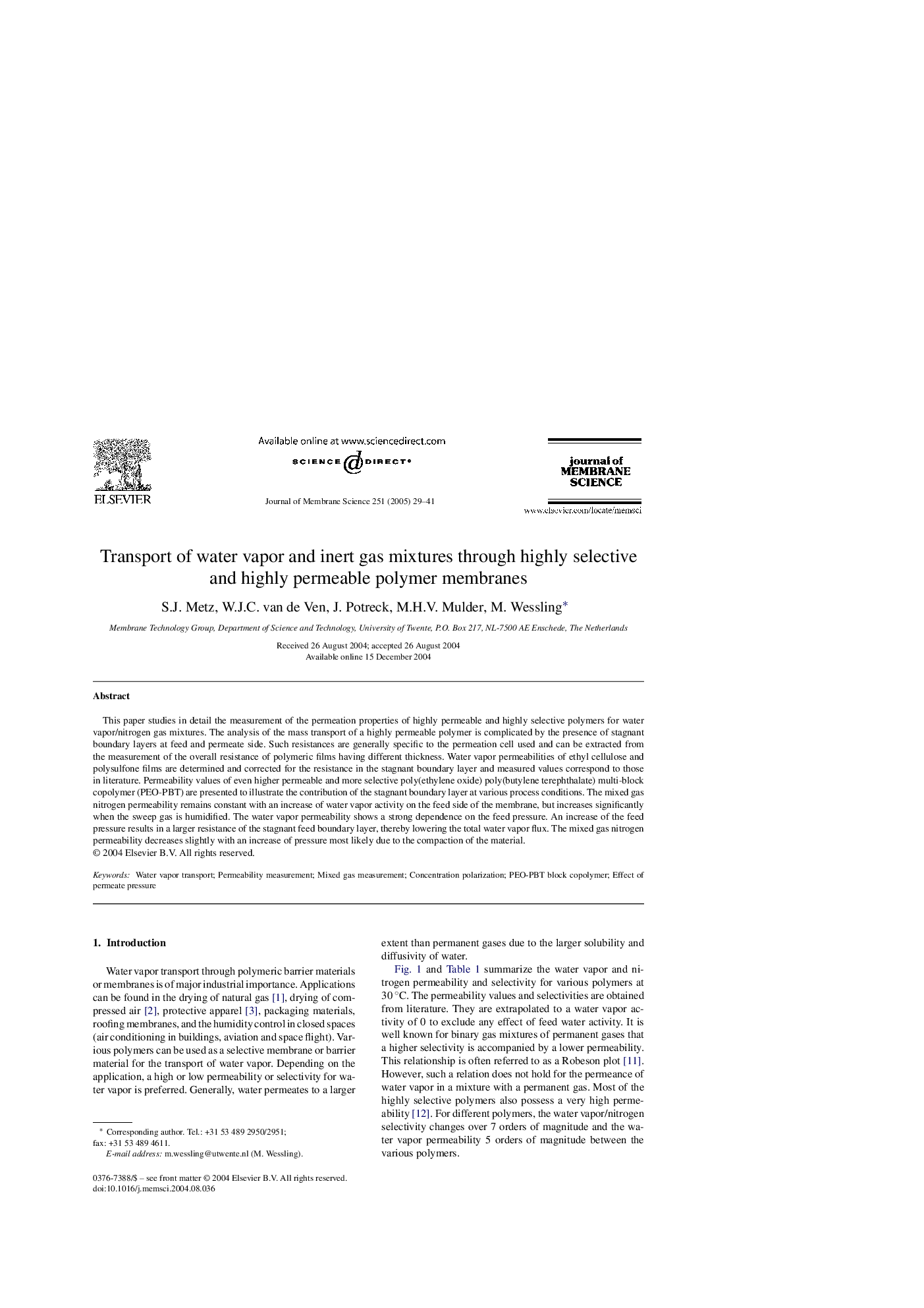| Article ID | Journal | Published Year | Pages | File Type |
|---|---|---|---|---|
| 9684964 | Journal of Membrane Science | 2005 | 13 Pages |
Abstract
This paper studies in detail the measurement of the permeation properties of highly permeable and highly selective polymers for water vapor/nitrogen gas mixtures. The analysis of the mass transport of a highly permeable polymer is complicated by the presence of stagnant boundary layers at feed and permeate side. Such resistances are generally specific to the permeation cell used and can be extracted from the measurement of the overall resistance of polymeric films having different thickness. Water vapor permeabilities of ethyl cellulose and polysulfone films are determined and corrected for the resistance in the stagnant boundary layer and measured values correspond to those in literature. Permeability values of even higher permeable and more selective poly(ethylene oxide) poly(butylene terephthalate) multi-block copolymer (PEO-PBT) are presented to illustrate the contribution of the stagnant boundary layer at various process conditions. The mixed gas nitrogen permeability remains constant with an increase of water vapor activity on the feed side of the membrane, but increases significantly when the sweep gas is humidified. The water vapor permeability shows a strong dependence on the feed pressure. An increase of the feed pressure results in a larger resistance of the stagnant feed boundary layer, thereby lowering the total water vapor flux. The mixed gas nitrogen permeability decreases slightly with an increase of pressure most likely due to the compaction of the material.
Related Topics
Physical Sciences and Engineering
Chemical Engineering
Filtration and Separation
Authors
S.J. Metz, W.J.C. van de Ven, J. Potreck, M.H.V. Mulder, M. Wessling,
